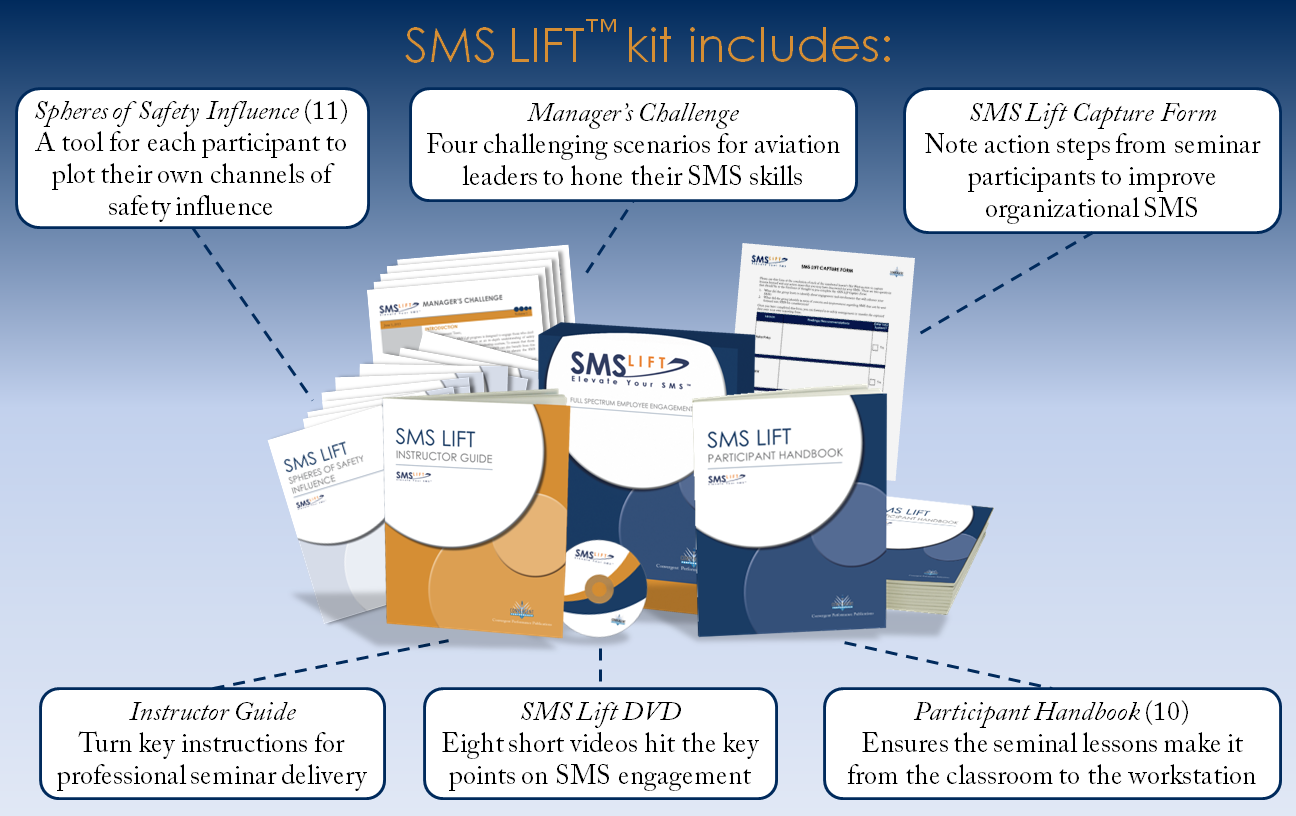GCAA lead the way – choosing Q-Pulse as the solution
 The General Civil Aviation Authority (GCAA) is a federal, autonomous body set up to oversee all aviation-related activities in the United Arab Emirates. Created in 1996, the GCAA provide designated aviation services with observance to safety and security to strengthen the aviation industry within the UAE and its air space.
The General Civil Aviation Authority (GCAA) is a federal, autonomous body set up to oversee all aviation-related activities in the United Arab Emirates. Created in 1996, the GCAA provide designated aviation services with observance to safety and security to strengthen the aviation industry within the UAE and its air space.
Regulating over 550 organizations throughout the UAE, the GCAA required an electronic auditing system which would allow them to easily demonstrate traceability of audits and analyses their findings within and across organizations.
By implementing Q-Pulse, developed by Ideagen Gael Ltd, the GCAA moved from their laborious paper-based system to an electronic auditing system, allowing them to holistically analyses the audit findings and issues from their regulated organizations.
In doing this, the GCAA became the first such regulator in the world to use Q-Pulse for their entire internal and external auditing processes.
The Background
The aviation industry in the United Arab Emirates (UAE) is one of the few growing markets in the world. Founded in 1996, the General Civil Aviation Authority (GCAA) regulates Civil Aviation across the UAE, ensuring that safety and security is being met to regulatory standards.
Since its inception the authority has made considerable progress as the aviation industry in the UAE continues to grow, embarking on bold new initiatives to provide a better service for the aviation industry.
Modernization of the air traffic control center program, radar equipment’s and the establishment of new facilities to serve the aviation growth in the UAE are just some of the projects initiated by GCAA. The GCAA have also been busy behind an overhaul of civil aviation services in the UAE, creating the necessary infrastructure required to bring them in line with the rapidly growing market. These include state-of-the-art Air Traffic Control systems; Civil Aviation Regulations and AIP upgrades; Flight Safety Services procedures; internal HR structures and policies; and a host of other activities to ensure safe and efficient services.
The UAE were the first in the Middle East region to introduce Satellite Navigation GPS approach procedures, when it was introduced for Dubai International Airport.
The Challenge
With over 550 organizations – from Aircraft Operators to Air Traffic Control centers – GCAA realized that it was imperative they moved from their dated and laborious paper based auditing system. Previously, evidence and findings had been collated through a series of impractical phone calls and e-mails – meaning traceability was then hard to demonstrate.
The GCAA recognized that they needed a single, clear system to relay their audit findings from their hundreds of regulated clients and organizations, and allow them to analyses those same findings quickly and easily.
By turning to Q-Pulse – developed by Ideagen Gael Ltd – GCAA had found the most comprehensive and flexible software tool that met their auditing needs, allowing them to integrate all their audit schedules and findings electronically in one centralized place.
Ismaeil Mohammed Al Balooshi, Director of the GCAA’s Aviation Safety Department, said: “It was becoming increasingly difficult to keep on top of our auditing. Our previous system was paper based and having used this for several years it was proving extremely complicated when trying to retrieve and access information, such as previous audit findings. A need arose to analyses trends and source potential problems – which ultimately made it more difficult in ensuring aviation safety to industry regulations.
“At the GCAA, we regulate hundreds of organizations across an extensive range of services in the UAE such as Aircraft Operators, International Airports, Dangerous Goods forwarders as well as training, medical and maintenance organizations. So our new system had to show we were actively ensuring safety in all the organizations we regulate.
“What we needed was a system that allowed us to integrate all our auditing schedules, findings and evidence into one easy to use database, allowing all our regulated organizations to submit their evidence centrally. But also one that had the scope to extend beyond our initial auditing requirements into areas such as document control for manual and other such approvals, plus the scope to manage a fully integrated SMS system.
“We found Q-Pulse – and quickly realized it provided the solution to our immediate and future needs.”
The Solution
By implementing Q-Pulse, the GCAA became the first such regulator in the world to adopt a centralized electronic system deployed directly into the organizations they regulate, firmly establishing a robust scalable solution capable of managing audit, document and SMS activities.
The unique and groundbreaking new project allowed the authority to introduce an innovative idea and completely overhaul their previous auditing system.
Through Q-Pulse, the GCAA integrated all of their audit schedules and findings – in areas such as Airworthiness, Flight operations, ANAs, Licensing and Security – into one central database. Instead of working with a traditional paper based and laborious system, all of GCAA’s auditing plans and results can be found through easy-to-use Q-Pulse features yielding significant benefits.
All of the authority’s regulated organizations are now managed within Q-Pulse to track all their audit activity and findings, plus keep a copy of the latest version of their approved manuals. Previous revisions are also automatically archived and can be retrieved on demand. The latest version is always available at the point of audit thus findings can be raised against them, checklist questions or ad hoc findings, all of which can easily be graphically analyzed.
Q-Pulse has allowed the GCAA inspectors to plan and process their audits from creation to final closure, while regulated organizations interact with Q-Pulse to resolve their audit findings. This has had a hugely positive impact on both the GCAA and their regulated organizations, with response times being cut dramatically for issues needing resolved for example.
As with any similar organization managing a large quantity of other organizations, the result is a vastly improved regulator/regulated relationship. Strengthening this bond has resulted in the better control and scheduling of audits, an improved sharing of knowledge across disciplines and an easy, user-friendly tool to analyses the results. In industry terms, the GCAA’s innovative decision to introduce Q-Pulse has resulted in an upsurge in market confidence – and safer skies above the UAE.
Saif Mohammed Al Suwaidi, who took up his role as GCAA’s Director General in 2006, said: “As the first CAA in the world to adopt this approach, the GCAA has taken a truly proactive stance in maintaining and improving safety and security oversight.
“As well as being an innovative project with a truly unique approach, it is extremely encouraging to see technology being applied in such an innovative way. This is within an industry in which it is imperative both to take full advantage of the advances that are occurring around us, and to keep pace with the continuing expansion in the region’s aviation sector. This will assist the GCAA in establishing a strong infrastructure to formulate the basis for their safety and security resolutions and enforcement action. This platform is also used by many of our partners in the UAE civil aviation industry which will allow us to streamline our related processes, and hence allow us to provide better services to our clients.”
Safian Baharome, Quality Assurance at flydubai, revealed their improved relationship with the GCAA has helped boost their Quality Management. Safian said: “We have found the GCAA’s interaction with Q-Pulse as helped us manage our non-conformances better. The CA/PA module has enabled us to track our non-compliances better and provide data for analysis and review while the ‘My Action’ provides a snap shot of any findings that are outstanding. Q-Pulse will also prompt and flag any non-conformances that are still open so that they would be able to be closed in a timely manner. Q-Pulse has enabled us to not only manage our audit findings better, it has provided us with easy data extraction for our CI program.”
Tony Mackenzie, Manager of Operations and Compliance at Etihad Airways, said: “This is an excellent step forward in the UAE and light years ahead of some countries in Europe. Well done.”
The Results
By implementing Q-Pulse as their centralized auditing system, GCAA eradicated their confusing paper based methods and ensured that the gap between the regulator and the regulated – a huge problem experienced across the entire aviation industry – was bridged. As the regulator, GCAA now have complete control of their audit schedules and timelines and can share knowledge across disciplines, something they previously had difficulty in achieving.
By implementing Q-Pulse, the GCAA provided their 50-plus inspectors and over 550 regulated clients with a simple and easily accessible auditing database. Analyzing their audit findings has also been made realistically achievable within an acceptable timescale. Q-Pulse allows GCAA’s auditors to study findings easily and effectively, meaning they can learn and target areas of improvement across region, regulation and industry.
In terms of the regulated, GCAA’s implementation of Q-Pulse has provided them with one place for all their evidence collation – allowing them to prepare for audits and see all their historical findings.
Donald Maciver, Managing Director at Ideagen Gael Ltd, said: “This project is poised to bridge the gap between the regulated and the regulator that has been such a source of frustration within the aviation industry worldwide. Ideagen Gael is an experienced provider of aviation safety solutions, and Q-Pulse is without doubt the solution of choice within the aviation community.”
Ideagen Gael Ltd’s Chief Operating Officer, Ashley Marron, insists the benefit for both the GCAA and their 550 regulated clients is clear. He said: “The GCAA visionary approach of working with their regulated customer base has expanded the interaction of Q-Pulse to over 550 customers via the web. The GCAA have undoubtedly taken advantage of the fact that Q-Pulse is a robust scalable solution ideal at handling this extensive level of data reporting and action management.
“With over 50 inspectors alone within GCAA, the annual number of audits performed and findings raised is enormous and the operational benefits taking place internally by implementing Q-Pulse in terms of process management and scheduling is also significant. Imagine then the benefit of using the powerful Q-Pulse Analysis functionality to analyses trends across all the audits the GCAA perform. Utilizing the Wizards functionality and mandatory fields, a disciplined approach to data entry, the GCAA’s vision of using the data trend analysis proactively can be achieved. I am really excited about the impact and success of the project.”
Within the GCAA, Q-Pulse will also serve to enhance communication between their internal divisions. This will enable the authority to provide an integrated environment offering safety and security while meeting their commitment to provide the highest standards in aviation safety and security.
Abdulla Al Housani, the GCAA’s Audit Development Manager, said: “As the audit development manager, I’m looking forward to the long term benefits that we’ll get from using Q-Pulse. Not only will we get valuable analysis from the performance and areas of development of our audited organizations, but we’ll also be able to improve and develop our Inspector performance and auditing techniques.
“As we are using one system for all GCAA audit programmers we’ll be able to learn across the organization and develop best practice with our Inspectors, plus new Inspectors will also benefit from this system as they’ll be able to use the data generated from previous audits across the GCAA.”
Sextant Readings Solutions partners with Ideagen Gael Ltd to deliver comprehensive quality, risk, and safety management solutions to the America’s aviation industry
 Airports across the world are using Q-Pulse to streamline safety, risk and quality management processes. FAA Part 139 Airports benefit from Q-Pulse supporting Daily Inspection, Self Inspection, Annual Audit, Emergency response planning, Personnel and Asset management.
Airports across the world are using Q-Pulse to streamline safety, risk and quality management processes. FAA Part 139 Airports benefit from Q-Pulse supporting Daily Inspection, Self Inspection, Annual Audit, Emergency response planning, Personnel and Asset management.
 The General Civil Aviation Authority (GCAA) is a federal, autonomous body set up to oversee all aviation-related activities in the United Arab Emirates. Created in 1996, the GCAA provide designated aviation services with observance to safety and security to strengthen the aviation industry within the UAE and its air space.
The General Civil Aviation Authority (GCAA) is a federal, autonomous body set up to oversee all aviation-related activities in the United Arab Emirates. Created in 1996, the GCAA provide designated aviation services with observance to safety and security to strengthen the aviation industry within the UAE and its air space. JetSuite needed to be able to plan the use of their aircraft and pilots in the most efficient manner to serve their growing customer base. Moreover, they needed to be able to react in real-time to the disruptions in the ever changing environment they operate in. From customer requests coming in within 24 – 48 hours of flight, to weather changes, to unplanned mechanical pop ups, JetSuite needs to be able to maintain the highest level of customer satisfaction and performance reliability.
JetSuite needed to be able to plan the use of their aircraft and pilots in the most efficient manner to serve their growing customer base. Moreover, they needed to be able to react in real-time to the disruptions in the ever changing environment they operate in. From customer requests coming in within 24 – 48 hours of flight, to weather changes, to unplanned mechanical pop ups, JetSuite needs to be able to maintain the highest level of customer satisfaction and performance reliability.
